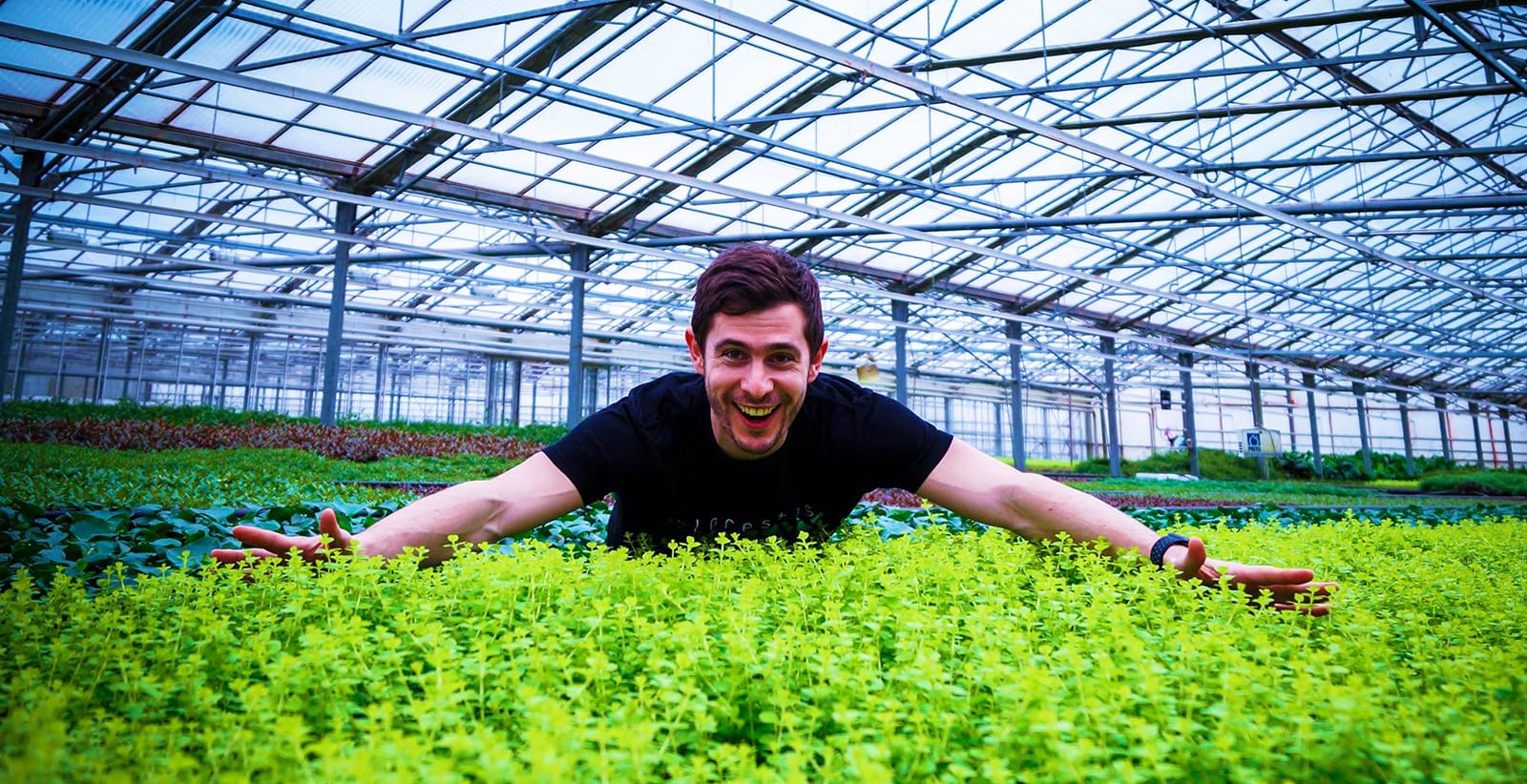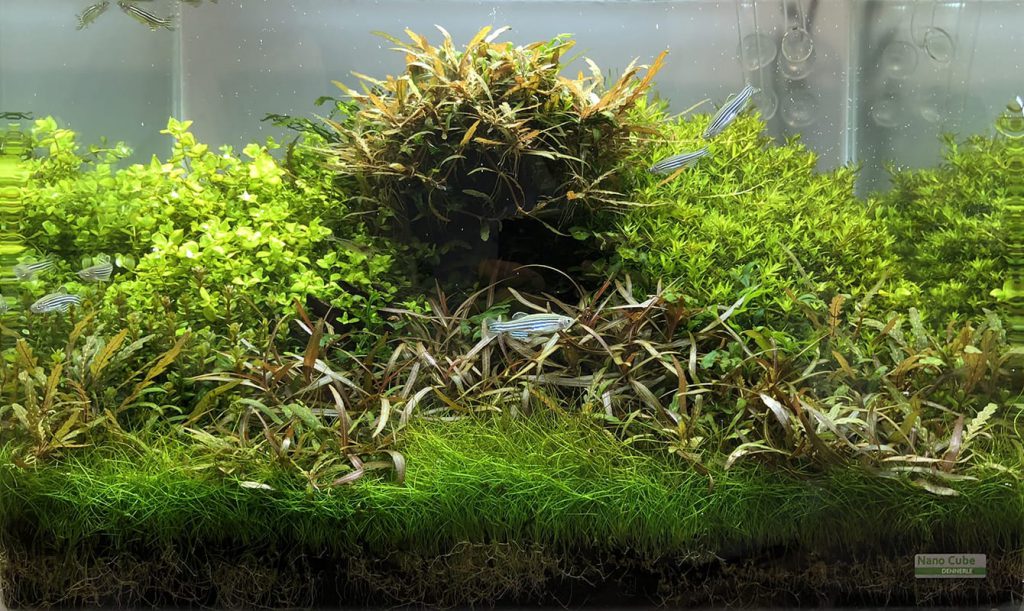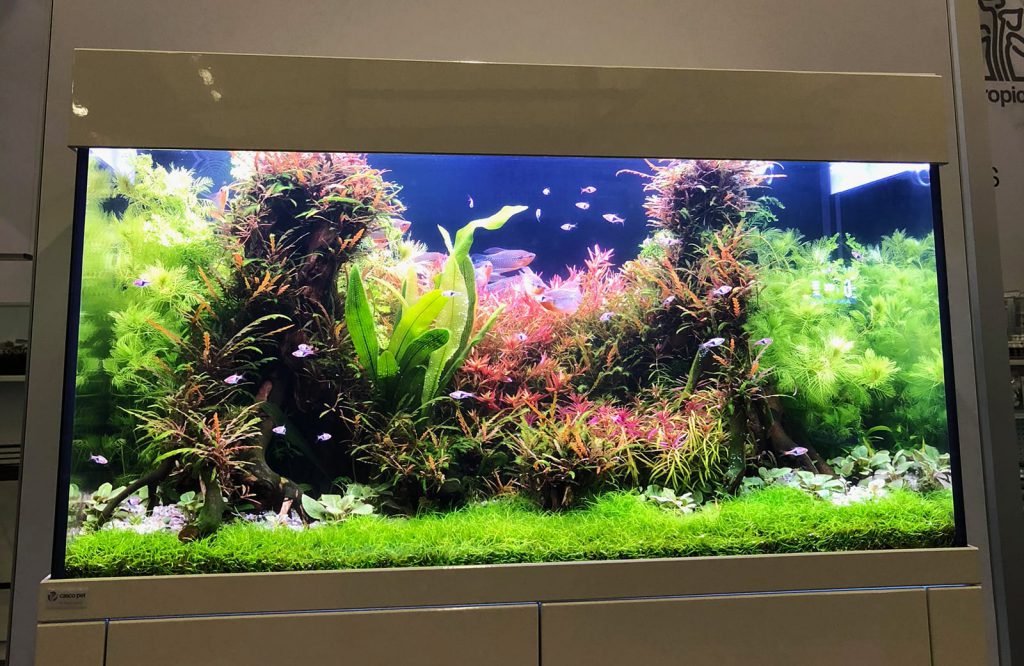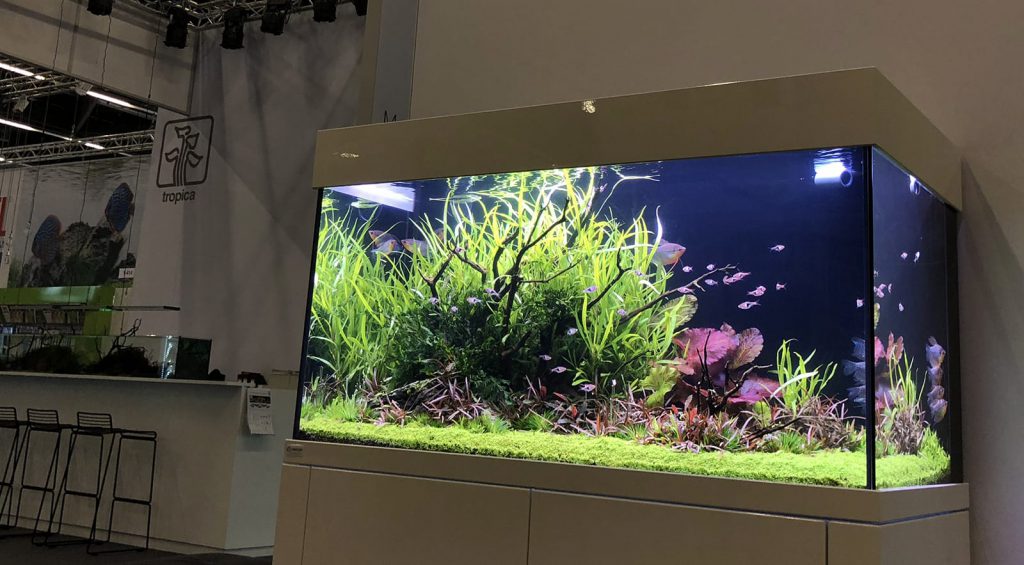Following our series of aquascaping interviews, we recently had a chat with Jurijs Jutjajevs, the face of German Aquascaping, and talked about his current activities as a professional aquascaper, his future plans and a lot more.
1. Hi Jurijs and thank you for accepting our invitation to undergo this interview. For starters, can you tell us a bit about yourself?
I’m 32 years old and I’m in the hobby for 20+ years. I’m a self-employed full-time aquascaper, freelance Social Media Manager for Tropica Aquarium Plants, Podcaster and YouTuber.
2. How did you get into the fishkeeping hobby and what was your first contact with Aquascaping?
I got into fishkeeping 20+ years ago with a 60cm beginner tank and quickly started using CO2 and growing underwater plants.
First contact with Aquascaping was 10+ years ago via aquascapingworld.com forum. I quickly became a moderator and later admin, which probably helped or even pushed me with making my hobby a career.
3. There are different styles of Aquascaping out there (Dutch, Nature Aquarium, Iwagumi etc.), what’s your favorite one and why?
I like the Iwagumi for its simplicity. However, perfect rock positioning is not easy and requires a lot of practice.
My own style I would describe as Nature Aquarium with attention to details. Over the years, and specifically doing aquascaping for clients I try to create nice scapes, that are easy to maintain at the same time.
Nature Aquarium Style offers the best tools for it. Ferns, Crypts, Anubias and Bucephalandra combined with either cosmetic sand or a carpet are pretty easy to maintain, while stems in the back grow fast and help compete with algae.
4. Please describe the most challenging setup that you’ve made so far.
240x30x30/40cm DBL bottom river stream layout for Tropica Aquarium Plants Interzoo 2018 booth.
Scaping such a long and shallow aquarium is a challenge on its own, but this one was built to be transported about 1.000 km to the exhibition, and to have a 100x turnover flow rate inside.
Plus all plants only had 2 months to mature prior the show. And having this tank as the main attraction of such a big brand puts a little bit of pressure on.
5. What’s your main source of inspiration for your aquascapes?
Available hardscape. If you go into nature or try to get inspiration from somewhere, you often get frustrated about not being able to find the right wood or stones.
Looking at what you have available and making the best out of it, is a creative process.
For sure you have to observe rock and wood formations in nature, nature photographs or someone else’s aquascapes, but not to a point of replicating them, but to learn about composition and combination.
6. Do you have a favorite species of aquatic plants or fish which you like to work with more often?
Recently Bucephalandras are my favorite plants. They grow slow, they attach themselves to decoration, they have nice vivid colors and if you are lucky, they produce flowers underwater.
7. Many people starting with Aquascaping complain about algae bloom and they usually give up when that happens. How do you keep your aquariums algae-free and what advice would you give regarding this matter?
Algae bloom is normal in the beginning, especially if you have excess nutrients in the water.
The Filter is not working properly yet, the Plants are not growing yet and not consuming the excessive nutrients and the fresh Soil is just overloaded with nutrients and is often leeching them into water.
Daily 50+% water changes help a lot.
I also recommend keeping the light period short for the first couple weeks (4-6 hours/day). High CO2 levels (30 mg/l) will help plants adapt quicker.
Further I add floating plants, they grow the fastest due to “unlimited” CO2 from the air and string light and help get rid of excessive nutrients.
Further I use RO water, that helps me get rid of silicates and phosphates that often come with tap water. I also use Active Carbon and Purigen as filter medium to absorb organic matter from the water column and finally Algae inhibiting devices such as Twinstar Nano sterilizer that will reduce the amount of algae spores.
I also add filter bacteria to the water and Algae eaters as soon as possible. With all above I sometimes (not always) have algae free starts. This is not a blueprint, but it definitely helps.
Oh and I don’t add any liquid fertilizer for the first 2-4 weeks or until I see first signs of nutrient deficiency.
8. What was the longest that you kept an Aquascaping aquarium? How many tanks do you keep right now and how many hours per week do you spend doing aquarium maintenance?
Longest was probably 4-5 years. It was the dentist aquarium, a room divider client aquarium.
I have 3 Aquariums running at home and several empty waiting to be setup.
At peak times I have had 10-12 Planted Aquariums running. Majority of them has been temporary for projects only. Also I used to have 15-20 client aquariums under maintenance, but this number has decreased over the past years.
Maintenance on overage I would say half an hour per week per tank. Like I said before, I make them to be easy maintenance.
9. Tell us a bit about the technical aspect of your aquariums, like filtration, light units, CO2, fertilization systems.
Most importantly I use RO water 100% on majority of my aquariums. The reason is simple. We have different tap water everywhere. Using RO and adding minerals same way, I can have water parameters in all tanks. My own and customer aquariums.
Other than that, I use Canister filters, preferably with built in heaters and pressurized CO2 Systems.
All new setups run on RGB led light. I really like the Twinstar products, they are good quality for a reasonable price.
10. How much of an artist do you have to be in order to create aquascapes like the ones you see in the major Aquascaping contests? What skills do you think differentiate a good Aquascaper from the best?
Some aquascapers put a lot of tension in their works. Others simply experiment and hope for the best. The outcome is sometimes a lucky incident.
I do not recommend scaping for a contest. Always scape for yourself and enter your best work into a contest, if you have multiple aquariums.
OK, you can do that specific contest aquarium if your really want and follow as many trends as possible. But guess what, the winner is the one who is thinking outside the box and maybe it’s the lucky incident one.
11. Is aquascaping a big thing in Germany?
Meanwhile it is. Aquascaping is becoming more of a common thing, like the evolution of planted aquariums. It’s not a trend anymore, it’s mainstream.
All major brands have aquascaping dedicated products in their range and such products are widely available. One is not hunting for Soil anymore.
Of course if you want the latest version of XY lilypipes or tools, you have to go to a dedicated shop, but the basics like Soil, NPK fertilizer, regular tools, CO2 diffusers, you can buy in every regular shop.
This really makes it easy for the beginners to get started. Also there is plenty of digital content available nowadays. YouTubers do a great job educating the beginners.
12. Can you tell us more about the work you are doing now as a professional Aquascaper?
I setup and maintain private customer tanks, I perform workshops and demonstrations, 1:1 coaching sessions for private customers or teaching shop staff how to better consult clients.
A big part in my daily routine is the work for Tropica Aquarium Plants. Taking care of their social media channels take several hours every day.
The rest of the time is filled with other projects, podcasting and making YouTube videos.
13. The craft of Aquascaping is definitely getting a lot more media coverage lately, how do you see it evolving over the years?
I like the fact that it is now present and more visible. I wish it to become even more visible in mainstream media. Forums > Facebook > Instagram > YouTube.
14. What are your plans regarding your future as an Aquascaper?
I’m looking forward to share my knowledge on as many channels as possible. I have started building a team that helps me create more content.
First member of the team is Logan who is editing my YouTube videos. Definitely wouldn’t be able to do it without his help.
Other than building a team and growing on different platforms, I’m looking to travel more outside Europe and visit the best shops in the world, go to all different kind of events and go to spots in nature to see the origin of our plants and fish species.
Jurijs is also the co-founder of Mosscotton, promoting the art of aquascaping through premium lifestyle products.
He regularly posts on Youtube and if you want to stay on track with all things aquascaping, make sure to follow him on Instagram @juri_js.
Enjoyed this article? Spread the word by sharing it with your friends!










